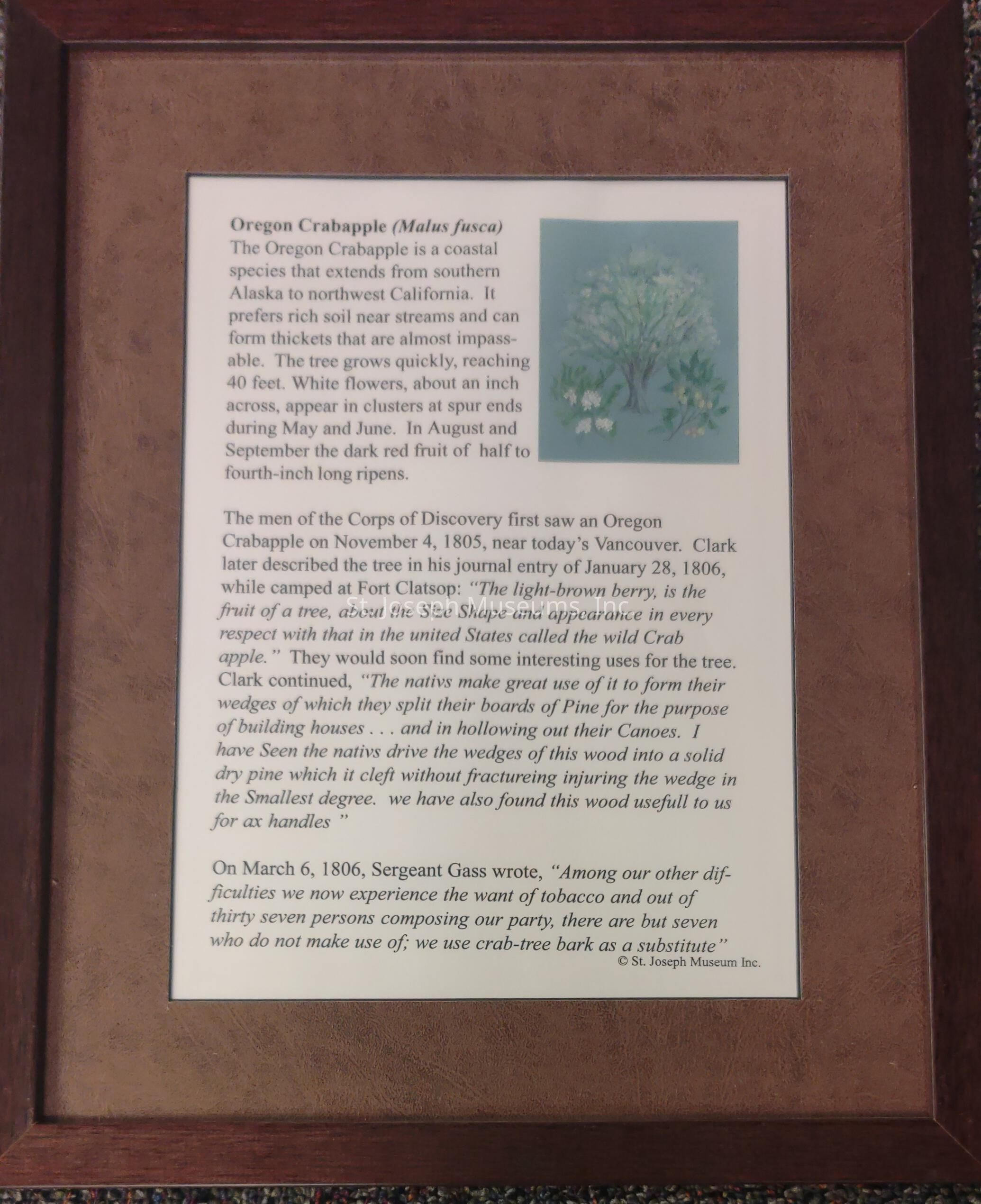Name/Title
Oregon Crabapple (Malus fusca)Entry/Object ID
2021.1.44 BScope and Content
Oregon Crabapple (Malus fusca) plant description, framed.
The Oregon Crabapple is a coastal species that extends from southern Alaska to northwest California. It prefers rich soil near streams and can form thickets that are almost impassable. The tree grows quickly, reaching 40 feet. White flowers, about an inch across, appear in clusters at spur ends during May and June. In August and September the dark red fruit of half to a fourth inch long ripens.
The men of the Corps of Discovery first saw an Oregon Crabapple on November 4, 1805, neaer today's Vancouver. Clark later described the tree in his journal entry of January 28, 1806, while camped at Fort Clatsop; "The light-brown berry, is the fruit of a tree, about the Size Shape and appeaerance in every aspect with that in the united States called the wild Crab apple." They would soon find some interesting uses for the tree. Clark continued, "The natives make great use of it to form their wedges of which they split their boards of Pine for the purpose of building houses...and in hollowing out their Canoes. I have Seen the nativs drive the wedges of this wood into a solid dry pine which it cleft without fracturing injuring the wedge in the Smallest degree. we have also found this wood usefull to us for ax handles."
On March 6, 1806, Sergeant Gass wrote, "Among our other difficulties we now experience the want of tobacco and out of thirty seven persons composing our party, there are but seven who do not make use of; we use crab-tree bark as a substitute"Context
Originally designed by the St. Joseph Museum in the fall of 2004. Titled "Botanical Wonders of the Uncharted West. The Recorded Flora of the Lewis & Clark Expedition."Collection
Lewis and ClarkLexicon
LOC Thesaurus for Graphic Materials
Botanical drawings, Expeditions & surveysArchive Items Details
Title
Oregon Crabapple (Malus fusca)Creator
Mary L. FletcherDate(s) of Creation
2004Subjects
Plants, Watercolor paintingsParts
Count
2Parts
Watercolor of plant and descriptive label, both framed.Condition
Overall Condition
Very GoodProvenance
Notes
"Botanical Wonders of the Uncharted West" visually depicts how well Lewis followed Jefferson's instructions. In recognition of this achievement, The S. Joseph Museums, Inc. commissioned accomplished artist Mary Fletcher to create fifty (50) selected paintings of flora documented by the Corps during their Journey. These framed watercolor originals are accompanied by similarly framed labels, generated by former Head of Research Jackie Lewin, which describe the corresponding plants with appropriate quotations from the Journals. This collection makes available for study and appreciation plants that were new to Lewis and Clark, but which Native Peoples already recognized as valuable sources of food, medicine, and tools. Some of these still remain a mystery to many, but all will enjoy their beauty, their diverse uses, and their accomplished renderings.
